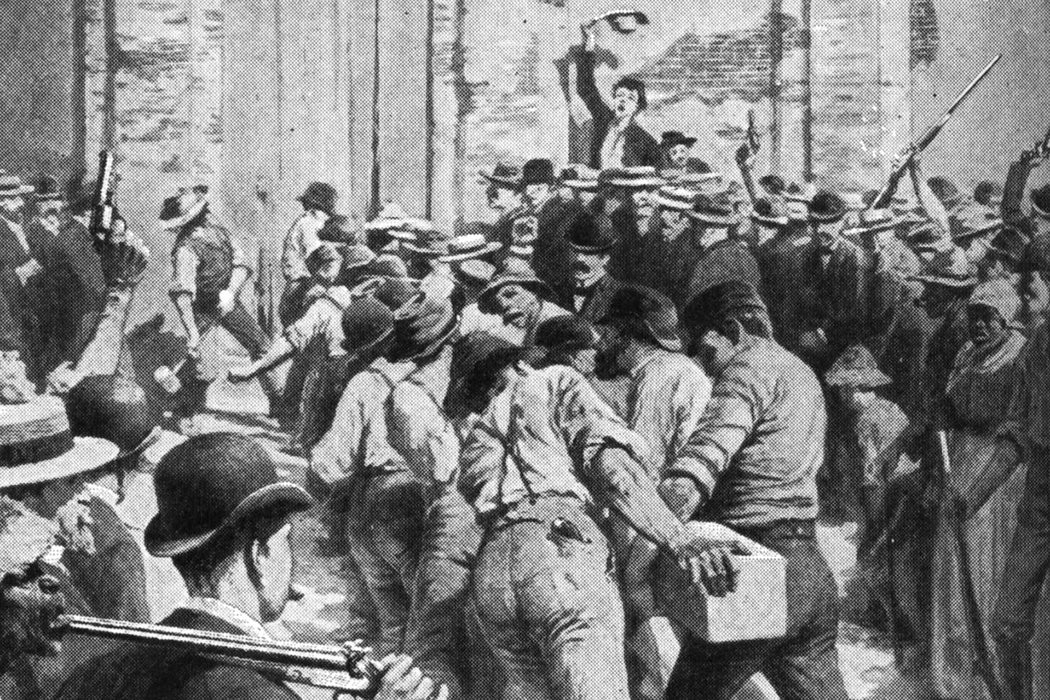In March 1891, a crowd of 10,000 people, many of them armed, marched to the Old Parish Prison in New Orleans where eleven Italian American men were being held. The men had been accused of involvement in the killing of the city’s police chief. A jury had acquitted them—or, in three cases, declared a mistrial—but the mob was convinced that they had only escaped a guilty verdict by bribing the jury and that they were probably plotting against other local officials.
As a newspaper reported the events that followed, “the advance guard composed of respectable business men, armed with shotguns and improved Winchesters, and numbering about three hundred men, at once took possession of the main entrance.”
The mob took little time tracking down the prisoners, shooting nine of them and hanging two others.
As Alan G. Gauthreaux writes, this was just one of a number of lynchings of Italian immigrants in Louisiana around the turn into the twentieth century. If such incidents sound a lot like the horrific acts of terrorism being carried out against Black Americans at that time, Gauthreaux argues that it’s no coincidence. Italian Americans became targets for mob violence precisely because of their connections with, and similarity in social position to, Black Louisianians.
After the end of the Civil War, Gauthreaux writes, Louisiana turned to immigration associations to convince southern Italians to come to the state and work in jobs previously held by enslaved people. Drawing on northern Europeans’ sense of superiority to their southern counterparts, white Americans tended to view these newcomers as an inferior racial group suited to manual labor.
While the immigrants understood that the plantation and business owners who hired them viewed them as innately inferior, they weren’t steeped in the American racial hierarchy. As a result, they had no qualms about working and living alongside Black Americans. Italians working on plantations accepted having Black supervisors, and some Italian kids went to majority-Black schools.
Gauthreaux writes that the two groups also developed political solidarity. In 1896, when the state government attempted to limit Black voting with property and educational requirements, Italian Americans joined a Populist Party protest against the measure. That same year, after a mob in St. Charles Parish lynched three Italian men, Black local residents joined the Italian community in paying their respects at the funeral.
Weekly Newsletter
Disturbed by the political implications of this kind of social alliance, some of the elite white southerners who formed the core of the Louisiana Democratic Party worked to sow division by disenfranchising Black citizens and giving Italians the vote. But this created internal dissent within the party. One opponent argued that the Italians were even more trouble than Black Louisianans and described them as being “as black as the blackest Negro in existence.”
Eventually, of course, Italian Americans in Louisiana and the rest of the United States were incorporated into whiteness. But, Gauthreaux writes, “at the height of the white struggle to reclaim control of post-Reconstruction Louisiana, Italians challenged the nature of black and white racial bipolarity.”







